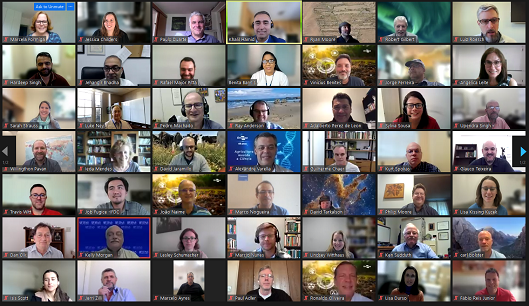 Brazil is the world’s largest importer of fertilizer and the fifth largest food exporter. In 2021-2022 fertilizer prices spiked worldwide due to higher energy prices and critical supply disruptions due to Russia’s unlawful invasion of Ukraine. The collaboration included the USDA Foreign Agricultural Service, scientists from the USDA Agricultural Research Service, and EMBRAPA, the Brazilian Corporation for Agricultural Research and the University of Florida’s Institute for Food and Agricultural Sciences. The project focused on ways to increase fertilizer-use efficiency and find alternatives to chemical fertilizer, both to reduce reliance on imported fertilizer and to reduce greenhouse gas emissions from overuse of chemical fertilizer.
Brazil is the world’s largest importer of fertilizer and the fifth largest food exporter. In 2021-2022 fertilizer prices spiked worldwide due to higher energy prices and critical supply disruptions due to Russia’s unlawful invasion of Ukraine. The collaboration included the USDA Foreign Agricultural Service, scientists from the USDA Agricultural Research Service, and EMBRAPA, the Brazilian Corporation for Agricultural Research and the University of Florida’s Institute for Food and Agricultural Sciences. The project focused on ways to increase fertilizer-use efficiency and find alternatives to chemical fertilizer, both to reduce reliance on imported fertilizer and to reduce greenhouse gas emissions from overuse of chemical fertilizer.
More than 60 scientists from these organizations met four times to develop their research program: a virtual workshop in July 2022; a hybrid workshop in Florida in November 2022; and virtual workshops in January and March 2023. The researchers identified four research streams to build upon:
- Precision management, big data, and artificial intelligence: Harness existing and emerging satellite and AI technologies that allow farmers to get more efficient distribution of the nutrients they apply into crops and soil management, thus decreasing fertilizer amounts required for production and reducing loss to the environment.
- Biological products, soil biology, soil health: Develop and evaluate new biological products that can be applied to fields and determine how to improve the physical and biological functions of soils, both to increase soil nutrient availability to crops and reduce chemical fertilizer requirements.
- New products, including fertilizers and bio-stimulants: Develop and evaluate new fertilizer formulations and sources of fertilizer to replace or decrease the dependence of traditional sources of nitrogen, phosphate, and potassium, including organo-mineral fertilizers and bio-stimulants to root growth (e.g., urease and nitrification inhibitors) to increase fertilizer use efficiency, reduce fertilizer requirements, and reduce loss to the environment.
- More efficient use of existing nutrient sources: 1) Determine ways to better use existing nutrients sources (such as animal manures, composts and legume cover crops) as alternatives to fertilizers, and 2) Develop new crop varieties that use soil nutrients more efficiently.
This collaboration of USDA FAS, USDA ARS, EMBRAPA, and the University of Florida was initiated with support from USDA FAS, and the U.S. Agency for International Development (USAID), and is continuing with support from the U.S. Department of State through their Global Fertilizer Challenge and its support of the USDA Fertilize Right Initiative.
Contact:
Khalil Hamid, khalil.hamid@usda.gov
Collaborating agencies, organizations, or institutions:
USDA Foreign Agricultural Service
USDA Agricultural Research Service
University of Florida Institute of Food and Agricultural Sciences

